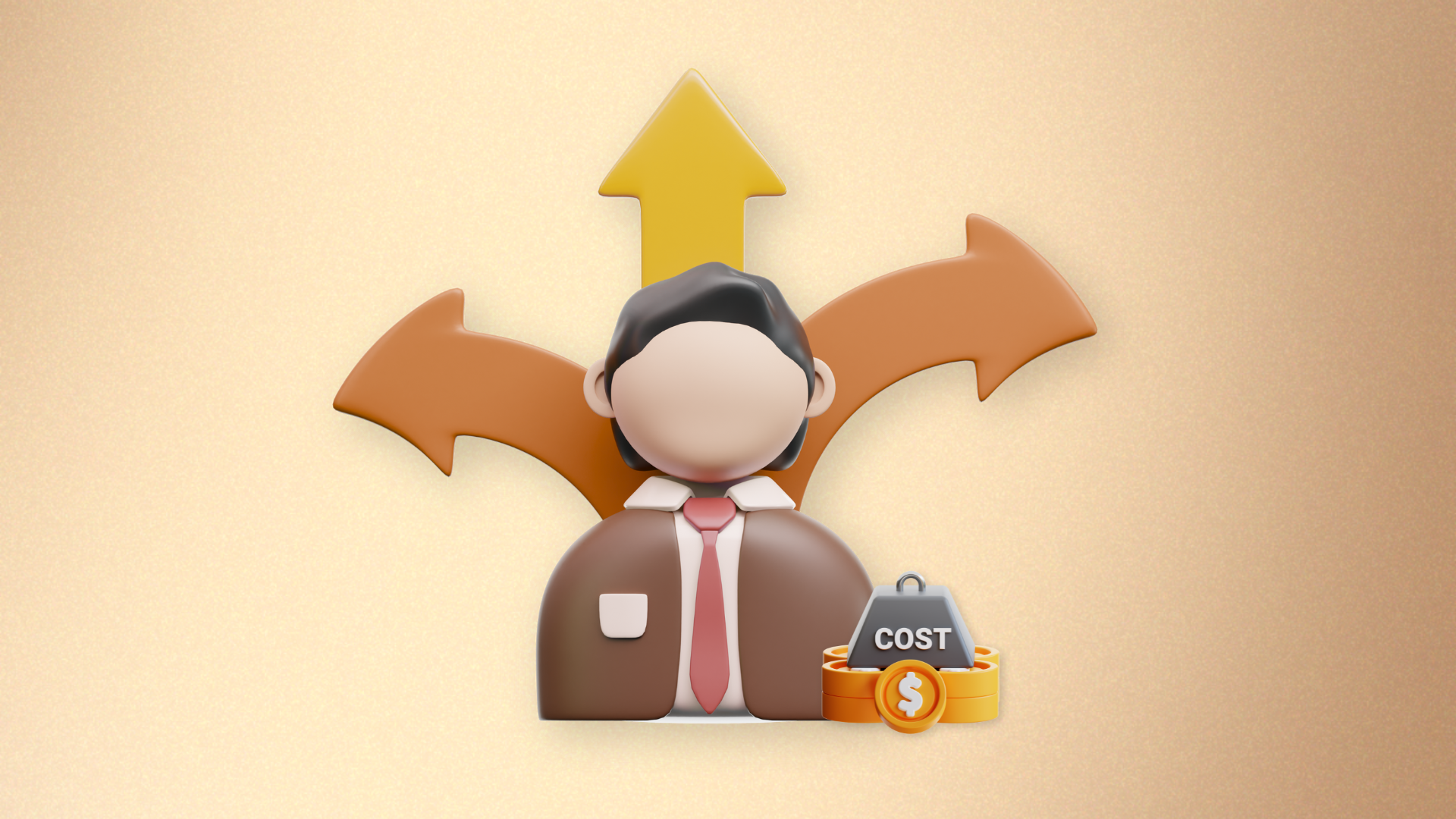Many of the times, business owners go through tragic situations to choose between potential option A and B. You usually think whether option A will give me more returns or option B. There is one powerful concept which can transform the way you take decisions i.e. opportunity cost.
In today’s KOFFi break, we will learn more about opportunity cost, the way to calculate it and its role in business decisions. Stay tuned!
What is the Opportunity Cost?
Opportunity cost is what you give up when you choose one option instead of another. It’s the value of the best alternative you didn’t pick. In simple words, it’s the “cost” of what you give up when you decide to pursue a particular option.
Imagine you are a cafe owner who wishes to invest Rs. 5,00,000 in your cafe. You have 2 options, either invest in interior design of your cafe or invest in index funds. Here, the opportunity cost is the value of the best alternative that you are giving up. It’s about understanding the hidden price tag of every business decision you make.
In simple terms, opportunity cost means that when you use your money or time for one thing, you can’t use it for something else.
In business, this idea helps you understand what you give up when you choose one option over another. For example, if you spend money on one project, you might miss out on the benefits of spending it somewhere else. Opportunity cost is about figuring out how much that “missed out” option is worth, often in money or percentages, so you can make better decisions.
Role of Opportunity Cost in Business Decisions
It’s like weighing your choices. People, investors, and business owners deal with these kinds of trade-offs every day.
For example, a business owner might have to decide between hiring someone for $80,000 a year or spending $3,000 a month on software. The right choice depends on which option gives the best value or return for the money.
Opportunity cost can work for you or against you. A negative opportunity cost means you lose more than you gain. A positive one means you made a better choice by avoiding a bad option.
Obviously, you could not choose to do all these at a time. You’re simultaneously rejecting a few tasks by considering your resources, your investment, your targets, etc. The moment when you choose something over another, the rejected option comes up with an opportunity cost.
For instance, if an investment didn’t perform well or a tool didn’t improve your results, it feels like wasted money. To avoid this, businesses use simple calculations to figure out the opportunity cost and choose wisely.
How to Calculate Opportunity Cost
Let’s calculate opportunity cost with an example:
Assume you have Rs. 1,00,000 to invest in stock markets, real estate, and others. But due to risk associated, you choose to keep it idle in a traditional savings account with 5% annual returns. Just give a look at the potential yield of the investments.
- Stock market: 12% return annually
- Real estate: 10% return annually
By keeping money parked in a low-returns savings account, you’re effectively losing:
- 12% potential returns from stock market investments
- 10% potential returns from real estate
Calculation Formula:
Opportunity Cost = Return of Rejected Option – Return of Chosen Option
Let’s calculate the opportunity cost for stock market:
12% of 100000 – 5% of 100000 = 12000 – 5000 = 7000
Capital Structure and Opportunity Cost
Making smart financial decisions starts with understanding your business’s capital structure and the costs of your choices. Every decision, whether to pursue or skip an opportunity, affects your business’s future.
Capital structure refers to how your business combines debt and equity to fund operations and growth. By understanding opportunity cost—the value of what you give up—you can make better financial decisions.
This insight helps you weigh options like reducing debt, introducing a new product, or securing more funding, ensuring every choice aligns with your financial goals.
Opportunity Cost vs. Sunk Cost
Many business owners get confused between opportunity cost and sunk cost. Let’s understand the meaning of sunk cost.
Sunk cost is the expense that has already been incurred and cannot be recovered. Sunk costs shouldn’t hamper your future decisions.
Buying ₹ 1,00,000/- of tech accessories, for instance, represents a sunk cost of ₹ 1,00,000/-. This amount of money was paid to invest in better tech equipment, which can’t be recovered without selling the accessories.
Here’s the distinction:
- Sunk Cost: Money already spent that cannot be recovered
- Opportunity Cost: Potential value of rejected choices
Pro Tip: Never let sunk costs trap you in poor decision-making. Always evaluate future potential, not past expenses.
Opportunity Cost vs. Risk
In business, risk is about comparing what you thought would happen with what actually happened. For example, if you expected Stock A to sell for ₹1000/- but it sold for ₹1400/-, that’s a positive outcome compared to the risk you took.
Opportunity cost, on the other hand, is about comparing one choice to another. Imagine you have a property. You can either rent it out for ₹50,000 per month or use it to start a café. If you choose the café but it only earns ₹40,000 per month, your opportunity cost is ₹10,000—the extra money you could have made by renting it out instead.
Risk looks at the success of one decision, while opportunity cost shows what you might have missed by not choosing something else.
Final Thoughts
Opportunity cost isn’t just a calculation, it’s a strategic lens for business decision-making. By consistently asking, “What am I giving up?”. Analyzing your opportunity cost will help in making informed choices, allocating resources, and driving strategic growth.
Your business’s next breakthrough might just come from understanding the hidden value of your choices
Was this helpful?
Click on a star to rate it!
As you found this post useful...
Follow us on social media!
We are sorry that this post was not useful for you!
Let us improve this post!
Tell us how we can improve this post?


 Ask us Anything!
Ask us Anything!